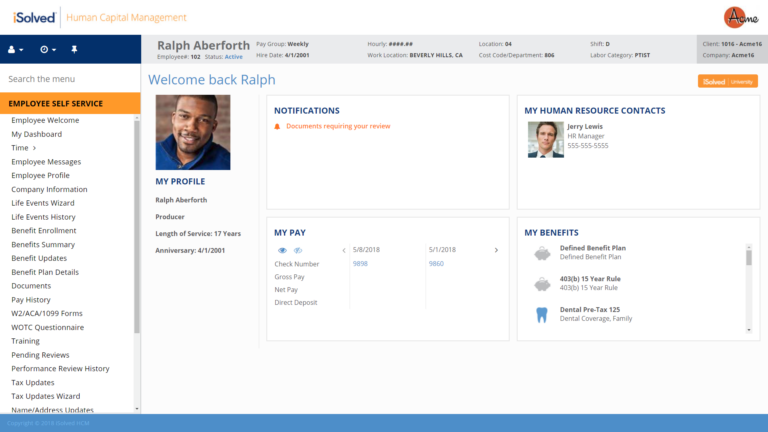


csv file and upload it to the Timezone custom object.
#Mytime isolved download
It took me a while, but I compiled the necessary data in this file you can simply download it as a. This is the hardest part, but worry not! I’ve done the heavy lifting. csv file and upload it to the Timezone object Next, create the following fields on the User object:Īdd these fields to the page layout if needed, but I would recommend you set them as read-only with Field-Level Security first. Wintertime Start - Text (255): FYI only, not needed for any calculation.Summertime Start - Text (255): FYI only, not needed for any calculation.I then showed it in a simple report and graph:įirst, create a new Timezone object with the following fields: I created a flow to run on the User object as well as a formula on Cases that retrieves the hour portion of the Created Date, according to the logged-in user’s time zone and taking the DST of this same user into account. Pen and paper (and brain) to the rescue, and I came up with the solution below which I hope will help others. that don’t use DST the other 48 do)!Īnother curveball was that the user’s time zone cannot be retrieved via formula. The dates and the time changes are different for every country, and there are even countries that use it in some parts and not others (for example, there are two states in the U.S. However, I came across other similar questions with users working in international companies who were struggling, because some countries use DST and some don’t. I was lucky enough that this question was for one time zone in Europe only, and since there is a set DST rule in the EU, we could find a formula that worked. I also needed to take Daylight Saving Time (DST) into account. I quickly realized that offsetting the result was not enough. You can read more in this Salesforce Help article in the “A Note About Date/Time and Time Zones” section. GMT, so you would add 7 hours to your result). If you’re in another time zone, you can then offset this result (for example, 9 a.m. When doing so, the formula always returns the value in GMT. One day, I came across a query about getting the time value of a date/time field in a formula. I simply love, love, love answering questions in the community, mostly formula ones. And, due to daylight savings, some records show as 1 hour before they were actually created, while others show the right time.
#Mytime isolved code
I can create a quick formula field returning the Hour portion of the Case Created Date, but I need to hard code the offset for the user’s time zone. I want my customer support managers to be able to see the peak times of the support center to help with scheduling staff.


 0 kommentar(er)
0 kommentar(er)
